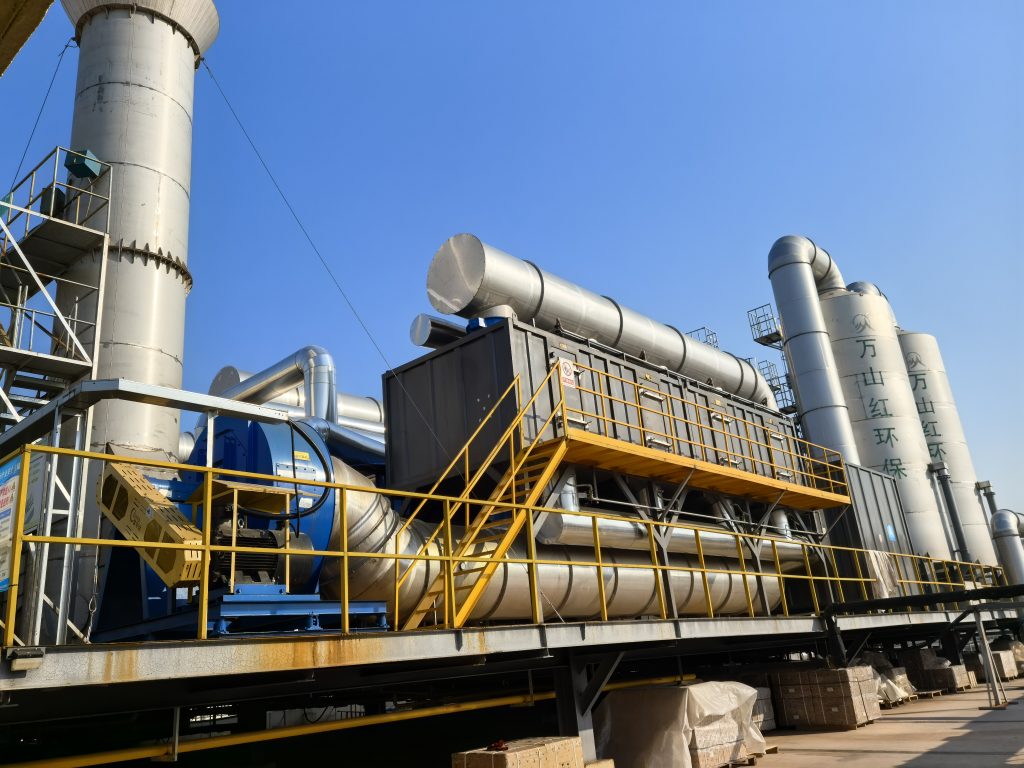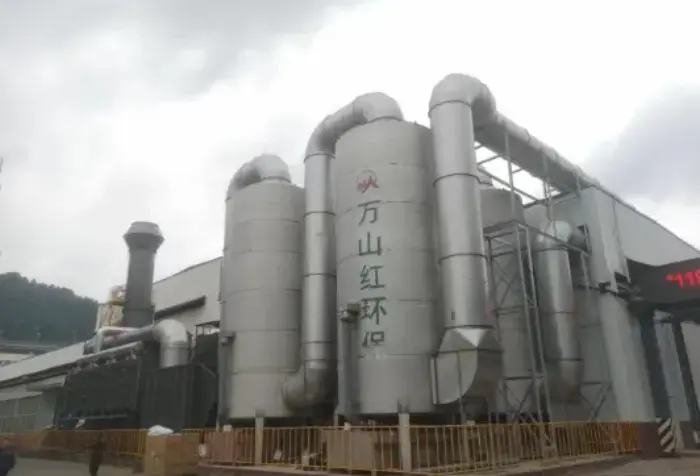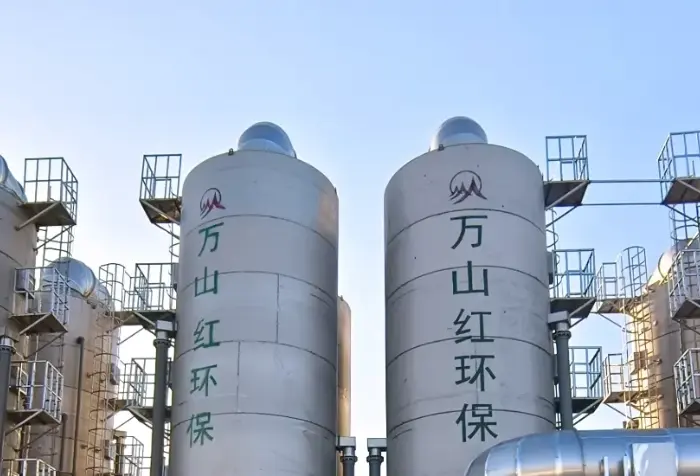RTO Waste Gas Treatment Equipment Principle and Application
Release time: 2025-04-03
With the rapid development of industrialization, many industrial production processes emit large amounts of harmful waste gases, which not only cause environmental pollution but also pose a threat to human health. Volatile Organic Compounds (VOCs), toxic gases, and particulate matter are common pollutants in industrial waste gases. To address these environmental challenges, waste gas treatment technologies have been continuously developed, among which RTO (Regenerative Thermal Oxidizer) technology, due to its efficient waste gas treatment capability and low energy consumption, has become a widely applied waste gas treatment technology.
This article will explore the working principle, chemical reaction process, and industrial applications of RTO waste gas treatment equipment.

RTO Waste Gas Treatment Equipment Working Principle
The core principle of RTO waste gas treatment equipment is to convert organic pollutants in the waste gas into harmless substances, such as carbon dioxide and water, through high-temperature oxidation reactions. The working process of RTO equipment is mainly divided into the following steps:
- Waste Gas Pretreatment: The waste gas first enters the RTO system and undergoes filtration and purification through pretreatment equipment to remove larger particulate matter, oil mist, and other impurities. This process ensures that the waste gas entering the RTO equipment has suitable components and temperature, preventing pollutants from damaging the equipment.
- Heat Recovery System: One of the key features of RTO equipment is its highly efficient heat recovery system. As the waste gas passes through a ceramic bed, the heat in the waste gas is absorbed and stored by the ceramic materials. The ceramic bed is typically made of high-temperature-resistant materials with a large surface area, enabling efficient absorption and storage of the heat in the waste gas. The temperature of the waste gas is raised during this process, providing the necessary heat for the subsequent oxidation reaction.
- High-Temperature Oxidation Reaction: The heated waste gas enters the oxidation zone. In this zone, the organic pollutants in the waste gas (such as VOCs) undergo oxidation reactions with oxygen at high temperatures, ultimately converting them into carbon dioxide and water. This process uses high temperature and oxygen to react with the carbon elements in the harmful gases, completely removing the harmful components. Through this method, the pollutants in the waste gas are effectively decomposed and converted into harmless gases.
- Heat Recovery and Reuse: The exhaust gas after the reaction is usually at a high temperature. The RTO equipment uses its heat recovery system to store this heat back into the ceramic bed. As the waste gas flows through the ceramic bed, the heat is recovered and used to preheat the incoming cold air. In this way, the RTO system can efficiently treat the waste gas while minimizing energy consumption, achieving energy-saving effects.
- Discharge of Purified Gas: After undergoing high-temperature oxidation and heat recovery, the temperature of the waste gas gradually decreases. After cooling and filtration, the purified waste gas is discharged into the atmosphere. At this point, the harmful components in the waste gas have been effectively removed, and the discharged gas generally meets environmental protection requirements.
RTO Waste Gas Treatment Equipment Advantages
RTO waste gas treatment machine has significant advantages in the field of waste gas treatment, mainly including the following aspects:
- High Efficiency in Pollutant Removal: RTO equipment can efficiently treat high concentrations of volatile organic compounds (VOCs), with removal rates typically exceeding 99%. It is especially suitable for treating complex industrial waste gases.
- Significant Energy Saving: RTO equipment greatly reduces external energy consumption through its heat recovery system. The heat in the waste gas is recovered and used to preheat incoming cold air, reducing energy consumption while improving the overall efficiency of the equipment.
- Wide Applicability: RTO equipment is suitable for the treatment of various types of waste gases, including organic gases, nitrogen oxides, and other pollutants. It has wide applications in industries such as chemicals, coating, power, electronics, and rubber.
- High Automation and Simple Operation: RTO equipment has a high level of automation, enabling continuous operation 24/7. The equipment’s operation and maintenance are relatively simple, reducing manual intervention and lowering operating costs.
RTO Waste Gas Treatment Equipment Application Areas
RTO waste gas treatment equipment is widely applied in many industrial fields, especially in industries that generate large amounts of organic waste gases. Below are several typical application areas:
- Chemical Industry: The chemical production process often releases large amounts of organic waste gases, such as benzene, toluene, and xylene. RTO equipment can efficiently oxidize these organic gases into harmless gases, reducing pollution.
- Coating Industry: Waste gases generated during automotive, furniture, and other surface coating processes often contain large amounts of organic solvents. RTO equipment can effectively remove these volatile organic compounds, ensuring emissions meet environmental protection standards.
- Electronics Industry: In the manufacturing of electronic products, especially in semiconductor and display panel production, many organic chemical gases are generated. RTO equipment can efficiently treat these waste gases, preventing environmental pollution.
- Rubber and Plastics Industry: During the production of rubber and plastics, a large amount of harmful gases and solvent vapors are released. RTO equipment can efficiently purify these waste gases, protecting the environment and workers’ health.
- Pharmaceutical Industry: The pharmaceutical industry is another sector with significant VOC emissions. RTO equipment can effectively remove organic waste gases produced during pharmaceutical manufacturing, reducing environmental impact.
Conclusion
RTO waste gas treatment equipment effectively reduces harmful components in industrial waste gases through its efficient heat recovery and oxidation reaction mechanisms, ensuring a clean environment and air quality. Not only does it possess a high efficiency in pollutant removal, but it also significantly reduces energy consumption, making it a highly energy-efficient and environmentally friendly waste gas treatment technology. As industrialization continues to advance, RTO equipment will continue to play an important role in various industries, making a positive contribution to environmental protection.






